The Soviet period
After the collapse of the Azerbaijan Democratic Republic, the government was taken over by the Military Revolutionary Committee of Azerbaijan. In April 1920, Baku became the capital of the Soviet Socialist Republic of Azerbaijan - the Azerbaijan SSR.
Occupation of Baku by the Boloshevik army. April 1920
The Soviet government succeeded in extending its power over the territory of the Baku province. The administrative unit of the province was abolished.
As before, the development of Baku continued after the establishment of Soviet power in Azerbaijan.
The first Congress (September 1920) of the peoples of the East was convened in Baku. The First All-Azerbaijani Congress of Soviets convened on May 6, 1921, approved the first Constitution of the Azerbaijan SSR (May 19). The First Transcaucasian Congress of Soviets convened on December 10, 1922 adopted a decision on establishment of the Transcaucasian Socialist Federative Soviet Republic (TSFSR).
In 1921-25, oil production in Baku almost doubled. In 1926-1927, many new industrial enterprises such as plants and factories were put into operation. In July 1926, the railway connecting Baku with Balakhani, Sabunchu and Surakhani mining areas was electrified. Ten new oil refineries were built in Baku. Oil fields were equipped with new machinery. The overall production of the Baku industry increased 2.2 times, while oil production tripled. The advanced achievements of technology were applied to the industry.
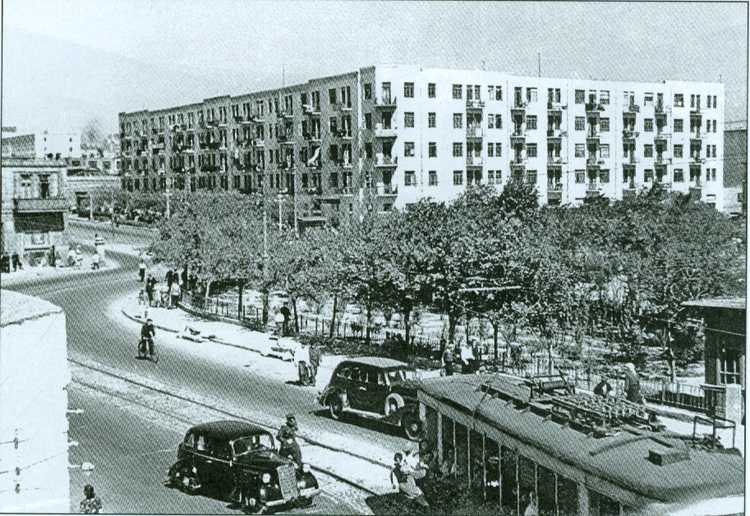
During the Great Patriotic War, the population of Baku rose in defence of their homeland. At the beginning of the war, thousands of workers from various industrial enterprises of Baku voluntarily went to the front. Baku residents donated about 2.5 million manats, as well as a large amount of gold, silver, etc. to the defence fund of the country. Baku became one of the main weapons depots of the Soviet army. The city supplied the Soviet army with military ammunition and equipment, while provided the economy with millions of tons of oil products. In the war years, Baku provided about 3/4 of the Soviet oil. Production of 100 new kinds of petrochemical products was adopted here. At that time, more than 1 million freight cars with various loads for the needs of the front and the country's industry, were dispatched only from Baku branch of the Azerbaijani Railways.
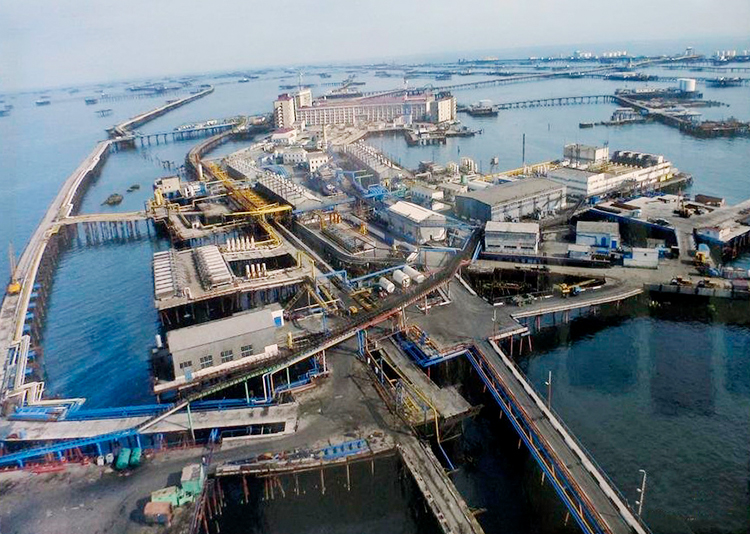
In the post-war period, the people of Baku have done a great deal of work on development of the national economy. Thanks to the tremendous work of the Baku workers, the oil production and other branches of industry began to develop intensively. Baku's oilmen were the first in the world to extract the oil from the open sea. Exploitation of the rich oil fields such as Oil Rocks (Neft Dashlari), Chilov Island, Gum Island, etc. had expanded. Baku had been turned into one of the major centres of petrochemical, machine-building, metalworking, light, food and other branches of industries. A large-scale house-building plant, a tyre plant, an underground railway were built in Baku, a Baku-Tbilisi-Yerevan gas pipeline was laid, a water pipeline was laid from Kura to Baku, comprehensive mechanization and automation of production was started at a number of industrial enterprises. In 1967, the Baku Metro was put into operation. Decisions of the Plenum of the Central Committee of the Communist Party of Azerbaijan in August 1969, played an important role in the management of the economy, improvement of selection and training of personnel and in increasing the political and labour activity of the people in Baku.
In the 1970s and 1980s, economy and culture of Baku developed even further. New oil refining equipment based on modern technologies was produced in Baku (YBNZ ELOU-AVT). The crude oil produced not only in Azerbaijan, but also imported from other union republics was refined there. Radio engineering and other branches of industry had emerged as well.
Air conditioning plant, several modern sewing and shoe factories, a champagne factory were built and put into operation, a number of facilities in the oil refineries were automated, a new subway line was laid and other works were carried out. Marine transport was also developed. The Baku Shipping Company had a large fleet transporting oil, dry cargo and passengers. In the first half of the 1970s, the Baku airport was reconstructed. Ahmadli, Guneshli, Serebrovsky (present Garachukhur) and Badamdar residential areas were built in Baku.
Baku Marine Passenger Terminal, the Palace of the Republic named after V. I. Lenin (present Heydar Aliyev Palace), “Moscow”, “Intourist”, “Absheron” Hotels, the Republic cycle track, and the architectural ensemble of V. I. Lenin square (present Azadlig Square) were built in 1970s. Gulustan Palace, a new zoo and indoor sports complexes were built in the 1980s. The area of greenery in Baku was increased to 10,000 hectares. Diagnostic and Cardiological Centres, Children's Health Complex, many hospitals, polyclinics and outpatient clinics equipped with modern medical facilities were built and put into operation in Baku.
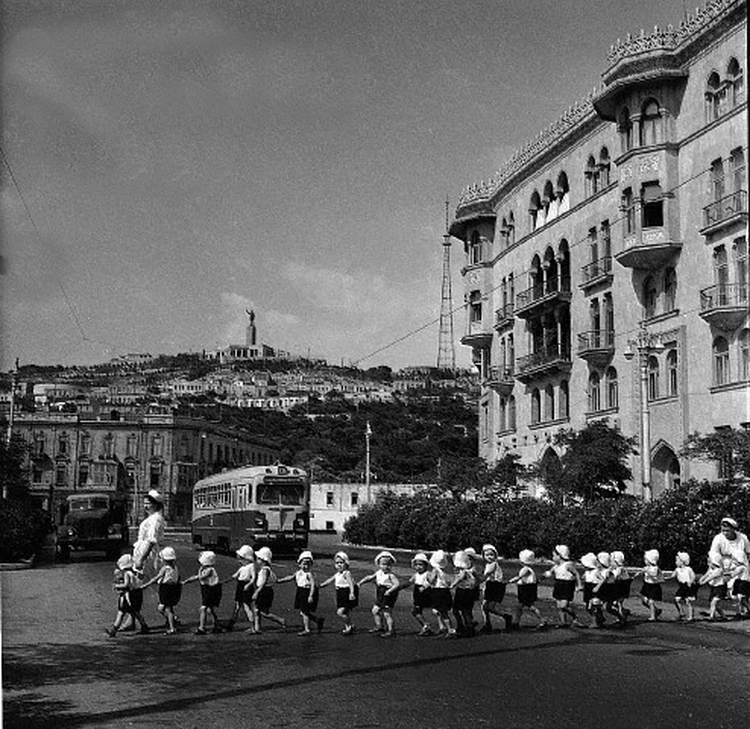
On Heydar Aliyev’s initiative, the Specialized Secondary Boarding School named after Jamshid Nakhchivanski (in 1991-1997, was named Baku Primary Military School) was established in 1971. In 1970-1980, new higher educational institutions started to operate. In 1971, the Azerbaijan Pedagogical Institute of Russian Language and Literature (now the Baku Slavic University) and the Azerbaijan Pedagogical Institute of Foreign Languages (now the Azerbaijan University of Languages) were established. There were 13,000 students at the Azerbaijan State University (now Baku State University). In the mid-1980s, the stereo film hall (the Araz cinema) was opened. In 1972, the State Museum of Azerbaijani Carpet and Folk Applied Art was established; in 1975, the house museums of U. Hajibeyli, S. Vurgun, and in 1982, the house museums of J. Jabbarli and Bulbul were opened. Since 1970, the journal "Soviet Turkish Studies" and since 1975, the journal "Nature of Azerbaijan" had been published in Baku. In 1976-1988, the first universal 10-volume Azerbaijani Soviet Encyclopaedia (ASE) was published in Baku. A new building of the ASE was opened in Icherisheher (Old City).
In the late 80s of the XX century, a pre-crisis situation erupted in the economic, political and spiritual life of the USSR. The growth of output and labor productivity had steadily declined. The communist ideology being the spiritual pillar of the current governing system was defeated. There was an intensive growth of the signs of protest against property looting and violation of rights and national identity in the Union Republics. Without the abolition of the one-party political system and the recovery of the sovereign rights by the Republics, it was impossible to revive the economy.
Once again, the Communist Party attempted to overcome the pre-crisis situation. Despite the changes in the socio-economic system and the practices in public administration, the goal was to protect the territorial integrity of the empire. Moscow used the traditional “divide and rule” strategy to weaken the centrifugal force, inflaming conflicts on national grounds. The Kremlin, in order to keep Azerbaijan and the South Caucasus as an important geopolitical territory, incited the "Nagorno-Karabakh problem" and Armenian separatism. Western countries being interested in the collapse of the Soviet empire were actively involved in this process.
The removal of Heydar Aliyev from his high position in the USSR leadership in October 1987 strengthened the hope of the Armenian separatists in achieving their goals. The first rallies were held by the "Committee of Karabakh" Organization in Yerevan and "Krunk" Organization in Khankendi (former Stepanakert). Since the beginning of 1988, the Armenian population began to hold continuous rallies and demonstrations in Khankendi. On 20 February 1988, an extraordinary session of the regional Council of People's Deputies was held in Khankendi, and a decision was adopted on secession of the autonomous region from the Azerbaijani SSR and its membership in the Armenian SSR.
Moscow continued to stoke the conflict. On arriving in Baku, a member of the Politburo of the Central Committee of the KPSS spoke about the inadmissibility of changing the borders, and another member who went to Yerevan justified separatism in the NKAO.
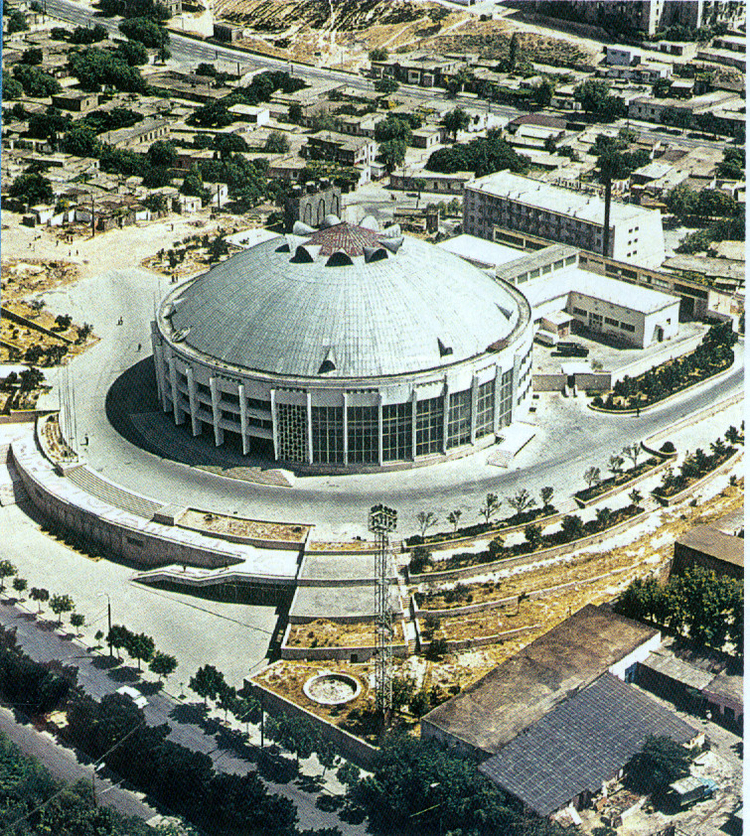
In January-February 1988, thousands of Azerbaijanis living in Armenia had sought asylum as refugees in Azerbaijan. On February 22, the first protest rally was held in Baku under the slogan "NKAR is an integral part of Azerbaijan."
After the rallies held in protest of violence committed against Azerbaijanis in Nagorno-Karabakh and Armenia, mass riots took place in Sumgait on 27-28 February 1988, being incited by the KGB of the USSR and with the direct participation of the Armenian extremists. 26 Armenians and 6 Azerbaijanis were killed. The investigation revealed that one of the organizers of the riots was an Armenian by nationality Edward Grigoryan who personally killed 5 Armenians.
On 18 May 1988, a rally was held on the Azadlig Square (former V. I. Lenin Square) in Baku to protest the expulsion of Azerbaijanis from Armenia.
In November 1988, having exchanged their apartments with the Armenians living in Baku, most of the Azerbaijanis, who had been massively expelled from Armenia, settled in the capital. At that time, a popular movement began in Baku. From November 17 to December 5, continuous meetings were held on the Azadlig Square. On 5 December, the government used military force in Baku and dispersed the rally, a curfew was imposed in the city. Currently, November 17 is celebrated as an official national holiday - the Day of National Revival.
The Presidium of the Supreme Soviet of the USSR in flagrant violation of the rights of Azerbaijan adopted a resolution “On the appliance of special form of governance in NKAO of the Azerbaijan SSR” on 12 January 1989. Under the leadership of pro-Armenian A. Volsky, temporary Special Administration Committee was created, being directly subordinate to Moscow, furthermore, the powers of all state and public bodies were suspended.
From 29 July to 6 August 1989, having been organized by the Popular Front of Azerbaijan, rallies were held in Baku, demanding the liquidation of the NKAO Special Administration Committee and restoration of the sovereign rights of Azerbaijan here.
On 9 September, at the rally held in Baku the requirement was expressed for the dissolution of the NKAO Special Administration Committee and the restoration of the sovereign rights of Azerbaijan throughout its territory.
On 1 December, the Supreme Soviet of the Armenian SSR adopted a resolution “On the reunification of the Armenian SSR and Nagorny Karabakh”.
On 13-14 January 1990, in response to the murder of two Azerbaijanis by an Armenian, confrontations with Armenians broke up. Being at that moment in Baku, the 12 thousand armed group of the USSR Ministry of Internal Affairs was indifferently watching these events.
On 15 January 1990, the Chairman of the Presidium of the Supreme Soviet of the USSR, M. Gorbachev, signed the decree “On declaring a state of emergency in the Nagorno-Karabakh Autonomous Oblast and some other regions”.
It was proposed to the Supreme Council of the Azerbaijan SSR that a curfew in the cities of Baku, Ganja and other locations be imposed.
On 17 January, a public rally began in front of the Central Committee of the Communist Party of Azerbaijan, and a general strike was observed. Demands were made for the cessation of the territorial claims of Armenia against Azerbaijan, and the sending of the imperial forces concentrated around Baku to Nagorno-Karabakh and the border areas of Azerbaijan being attacked by Armenia.
On 19 January 1990, the Presidium of the Supreme Soviet of the USSR signed a decree “On the introduction of a state of emergency in the city of Baku” from 12:00 a.m. on 20 January. The information about the fact that the troops would be used to carry out a massacre against the Azerbaijani people and the declaration of a state of emergency was kept secret. The power unit of Azerbaijan Television was blown up at 7:27 p.m. on 19 January.
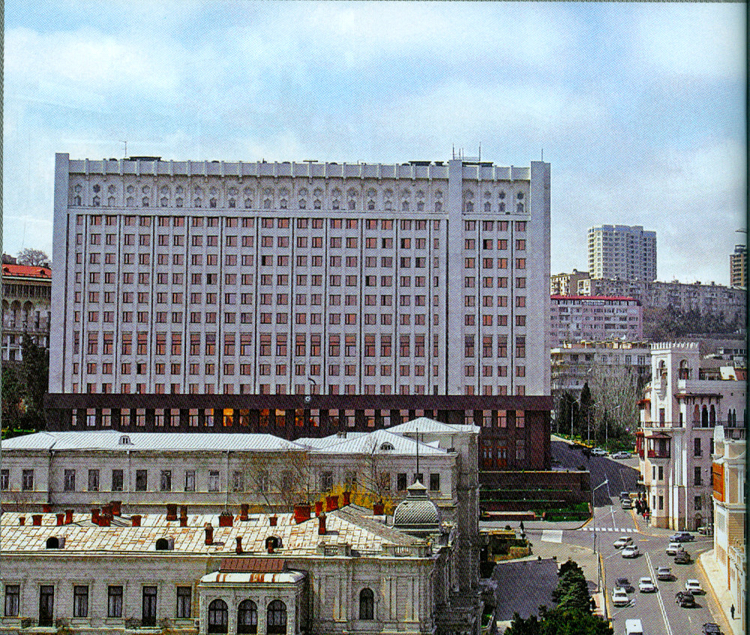
In Baku, thousands of people in order to prevent the Soviet army from entering the city took to the streets. On 19 January, from 9:00 p.m. the military units began to move toward the city from the direction of Turkan-Gala. The USSR Defense Minister Dmitry Yazov personally supervised the Baku operation. The troops of the Baku garrison, the arrived military units, and the groups landing from the military ships launched an attack against the civilian population. Heavy military equipment easily destroyed barricades and committed horrible atrocities with extreme cruelty; the soldiers used tear gas, shot unarmed people. Those who hid were found with the help of tank searchlights and shot. The military shot random passers-by (including the elderly, women and children), fired houses, ambulances, urban transport, killed the wounded, burned, defiled the corpses. People died a painful death under the tracks of heavy military equipment. The soldiers besieged the medical institutions and obstructed emergency medical help to the wounded.
As a result of the “military operation” of the Soviet army against unarmed people in Baku and other localities according to the official data 150 people were killed and 744 were injured, 4 people were missing, 400 people were arrested. There was enormous material damage to buildings, vehicles, urban facilities and citizens. It was only at 7:00 a.m. on 20 January that a state of emergency and curfew were officially announced.
On 22 January, despite the state of emergency, Baku and the whole of Azerbaijan parted with the martyrs. The city was dressed in a mourning robe. The Republic declared three days of mourning. A big mourning rally was held on Azadlig Square. About 2 million people participated in the rally and burial ceremony. It was the veneration of the sacred martyrs who sacrificed their lives for freedom, as well as the expression of protest against the bloody actions of Moscow. The slogans “Gorbachev is an executioner!”, “Down with the KPSS!”, “Occupants get out!”, and others were written on the streets of Baku and on the walls of the building of the Central Committee of the Communist Party of Azerbaijan.
On 5 February 1991, the session of the Supreme Council of the Azerbaijan SSR adopted a number of historic resolutions at the request of the democratic forces. The name of the country was renamed “Republic of Azerbaijan”. The flag of the Democratic Republic of Azerbaijan was approved as the State Flag.
On 30 August 1991, at an extraordinary session of the Supreme Council of the Republic of Azerbaijan, convened at the request of the people, a Declaration was adopted on the restoration of the state independence of the Republic of Azerbaijan.
On 18 October, at the session of the Supreme Council of the Republic of Azerbaijan, the Constitutional Act “On the State Independence of the Republic of Azerbaijan” was unanimously adopted. The independent Republic of Azerbaijan has declared itself the successor of the Democratic Republic of Azerbaijan existing in 1918-1920.
States of the world one by one recognized the independence of the Republic of Azerbaijan with capital in Baku.

